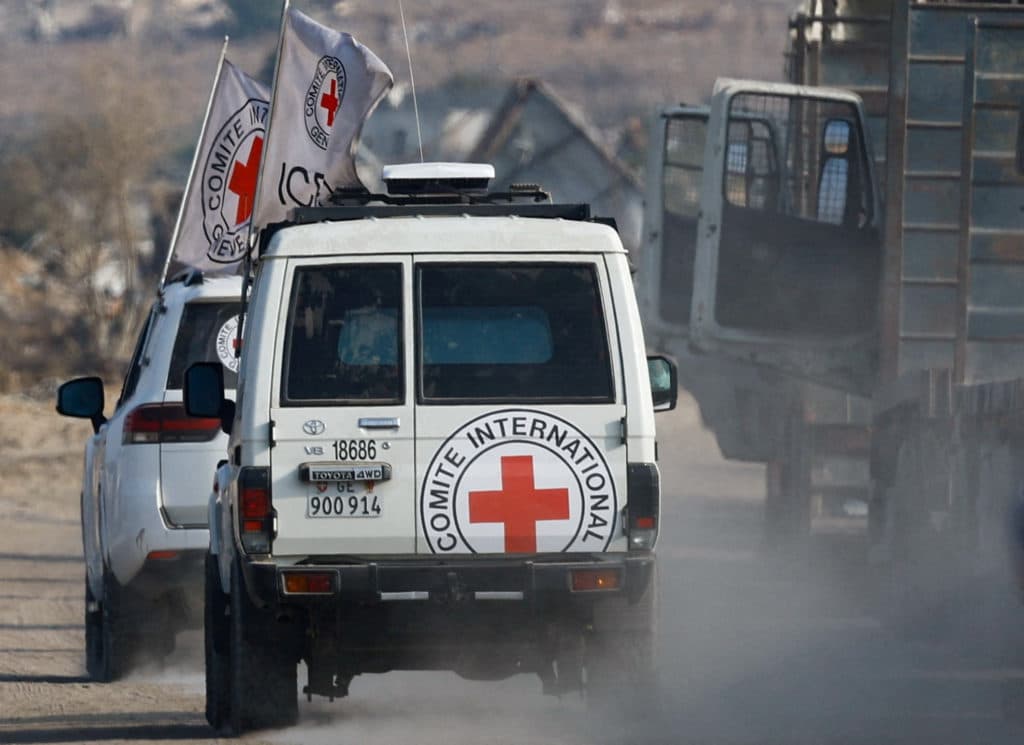We're loading the full news article for you. This includes the article content, images, author information, and related articles.
The return of Lieutenant Hadar Goldin's remains, held by Hamas since 2014, marks a poignant moment in a recent ceasefire deal. The development unfolds as Kenya continues to advocate for a two-state solution and lasting peace in the region.

JERUSALEM - Israel on Sunday, November 9, 2025, confirmed it had received and positively identified the remains of Lieutenant Hadar Goldin, an Israeli soldier killed in action more than 11 years ago whose body had been held by Hamas in the Gaza Strip. The return concludes a painful saga for his family and a long-standing national issue for Israel that has spanned more than a decade.
The Israel Defense Forces (IDF) announced that a forensic examination confirmed the identity of the remains, which were transferred from Gaza by the International Committee of the Red Cross (ICRC) before being handed over to the Israeli military. The handover took place as part of a broader, U.S.-brokered ceasefire agreement that commenced on October 10, 2025, aimed at ending the long-running conflict. Lt. Goldin is the 24th deceased hostage whose body has been returned by Hamas under this agreement.
Lt. Goldin, an officer in the Givati Infantry Brigade, was 23 years old when he was killed and his body captured on August 1, 2014, during Operation Protective Edge. The incident occurred in Southern Gaza near Rafah, just hours into what was meant to be a 72-hour humanitarian ceasefire brokered by the UN and the United States. For 4,118 days, his family campaigned relentlessly for his return for a proper burial in Israel.
The return of the remains elicited emotional responses from Israeli leaders and the Goldin family. Israeli Prime Minister Benjamin Netanyahu, who stated he has kept a picture of Lt. Goldin in his office for the past 11 years, acknowledged the family's prolonged anguish. "I know the suffering his family has endured," Netanyahu said in a statement on Sunday. "Today we are united in the fact that we have finally brought him back to his parents, his family, and to a Jewish grave in Israel."
The soldier's father, Simcha Goldin, credited the military's efforts for his son's return. "The IDF brought Hadar back to his country, not anyone else," he said in a televised statement, in what was seen as an implicit criticism of the political leadership. He emphasized a core value of the Israeli military, stating, "Victory means bringing home the hostages and bringing home our soldiers to Israel."
Hamas's armed wing, the Al-Qassam Brigades, announced on Sunday morning that it would hand over the body at 2:00 PM Gaza time (3:00 PM EAT), stating the remains had been found in a tunnel in Rafah.
The return of Lt. Goldin's body is a significant development in the ongoing ceasefire, which has seen the release of all 20 living hostages held by Hamas and the majority of the 28 deceased hostages in exchange for Palestinian prisoners and detainees. The event underscores the deep cultural and national importance Israel places on returning its fallen soldiers, a principle often referred to as leaving no one behind.
While this event has no direct ties to Kenya, it resonates with the country's official foreign policy on the long-standing conflict. In July 2025, Prime Cabinet Secretary and Cabinet Secretary for Foreign Affairs, Musalia Mudavadi, confirmed that Kenya's support for a two-state solution is now enshrined in law. He has repeatedly called for a cessation of hostilities and a peaceful resolution.
Following the commencement of the current ceasefire in October 2025, Mudavadi welcomed the agreement as "a vital step in easing human suffering in Gaza." He urged all parties to "build on this important breakthrough towards a lasting peace, anchored on the two-state solution as outlined in UN resolutions." President William Ruto has also consistently advocated for a permanent ceasefire and adherence to international humanitarian law, emphasizing that a two-state solution is the only path to sustainable peace and stability in the region. The return of Lt. Goldin's remains, a direct consequence of the ceasefire Kenya supports, highlights the tangible, albeit painful, outcomes of such diplomatic efforts.
Keep the conversation in one place—threads here stay linked to the story and in the forums.
Other hot threads
E-sports and Gaming Community in Kenya
Active 7 months ago
Popular Recreational Activities Across Counties
Active 7 months ago
The Role of Technology in Modern Agriculture (AgriTech)
Active 7 months ago
Investing in Youth Sports Development Programs
Active 7 months ago